Quality Flies

By Brian Kozminski
—SlluurpAH– “Set the Hook!”-exerts the guide.
“Ewp~ #$^@%!! Damn, I missed again!” casually disclaimers client.
“That’s the third trout you’ve missed today.” arm chair QB fishing buddy retorts from stern of the drift boat.
“Lemme check that fly, I know it’s your favorite ‘Lucky’ Adams, –BUT it is missing a hook.”
Never happened to you? Kudos, keep up the great work and spread your practices to all those who you may come in contact with. We need more vigilance like yours. Anglers who routinely check their fly and keep the hook sharp are a dying breed. Seems there is a trend in the fly market to buy volume ‘less expensive flys” from not so reputable sources. These days, I find it very hard to believe one would allow themselves to purchase a $600 reel, pair it with $800 rod and then continue to outfit and accessorize themselves in outrageous Monkey Logo’d shirts and fancy rubber pants, only to skimp on the single & most important partof the equation that actually connects them to the fish-> The FLY.
This passed summer, while waiting for clients, eating a delectable reuben sandwich, counting the number of Pine Grosbeaks, Siskins, and Purple Finches along side one of our more famous waterways, I overheard guys at a table next to me complaining about the price of flies. It was not the haughty Cherry Run Orvis store, but it was the height of big bug season, drakes were predicted tonight certainly on the North branch, possibly sections of the South, and inter-mitten log jams in between.
“$30 bucks a dozen! Thats a damn outrage!!” befuddled one guest.
Rightfully so, but when you hook a monster brown tonight, you must know a few facts about what goes into your $30/dozen flies versus the .80 per fly from Discount Fly Guy. The fly shop has a reputation to uphold, and it cannot be cut short at the terminal end of your line. The shop guys who tie flies all winter to pay the bills when rooms are not rented and few anglers make their way north for respite, only use quality hooks and materials provided by the shop owner. They in turn are paid on piece orders and quickly learn to tie a well proportioned Borchers Drake while not wasting materials nor thread wraps. I would bet my time on the water is going to be better spent using that fly versus a fifty cent knock of from Sri Lanka.
There was a guide, probably long gone now or working in Alaska, but he kept two distinct fly boxes in his boat.
Read More »Hardy Averon Fly Reel, Performance Meets Legacy

I don’t see a lot of anglers in the US fishing Hardy gear, and, the more of it I fish, the more I wonder why. I recently got my hands on a Hardy Ultralite X in a 7wt and an Averon 7000 reel. Both are stellar and you will be seeing a review for the rod before long. In this review I’m going to talk about the reel. Just about everyone who fly fishes knows of Hardy reels but here in the states lots of anglers, including myself, have little experience with them. Hardy is an English company founded in 1874, which means they’ve been around about as long as fly fishing itself. My experience with Hardy reels has been with the beautiful vintage reels a couple of my steelhead buddies own. A classic Hardy, whether new or vintage, is considered a pretty classy choice among hard core steelhead addicts and I’ve landed a few hot steelhead on Hardy reels that are over a hundred years old. I guess the first thing I have to say about Hardy reels is, I’ve never seen a hundred year old reel, still in service, made by anyone else. Frankly, I don’t know how much more I need to say but there is plenty to talk about. The Averon bears little physical resemblance to those classic reels. It’s a modern, high performance, large arbor, disk drag reel that’s right at home with the most advanced models of this century but its DNA is all Hardy. The Averon is a fresh water reel that feels much like it belongs in saltwater. The drag is smooth and powerful, boasting a max setting of ten pounds in the larger models. The drag itself is easily converted from left to right hand retrieve and removing or swapping the … Continue reading
Read More »Summer’s Over
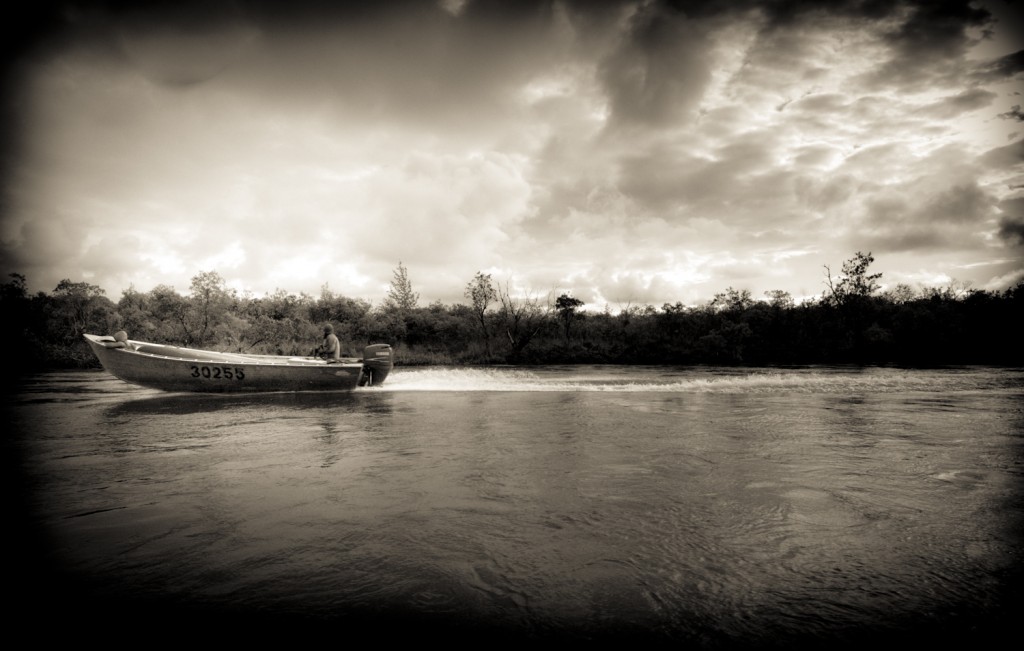
HERE’S ONE IMAGE AND AND A BRIEF STORY FROM AN ESSAY I DID FOR HATCH MAGAZINE.
TO SEE THE REST OF THE IMAGES VISIT HATCH. YOU’LL BE GLAD YOU DID.
In August of 2010, at he end of a hectic and exhausting summer, I found myself in western Alaska for a week at the Alaska West Lodge. Frankly I was a little burned out. The weather, which can be a formidable challenge in Alaska, complicated my travel arrangements. From Anchorage I was still two bush planes a bus and a boat ride from the camp which rest on an island in the Kanektok river. I fully expected to be spent by the time I got there. I found quite the opposite. By the time I reached the camp I was recharged with excitement by the place. Western Alaska is quietly beautiful. The travel it’s self had been visceral. I recall flying low over deserted wetlands, looking down and identifying parts of an airplane on the ground below. I remember thinking, “yes, you are in the bush now”.
While the other guests were unpacking, having a snack or smoking a cigar, I was getting into my waders and lining up my rod. I just couldn’t wait to see what this place had in store for me. I waded into the Kanektok and within a few cast my indicator disappeared and I was tight to a big rainbow. There I was in heavy water with no net playing a big fish. Clearly, I had not thought this through. About that time a boat rounded the bend.
Read More »More Than Just A Cast
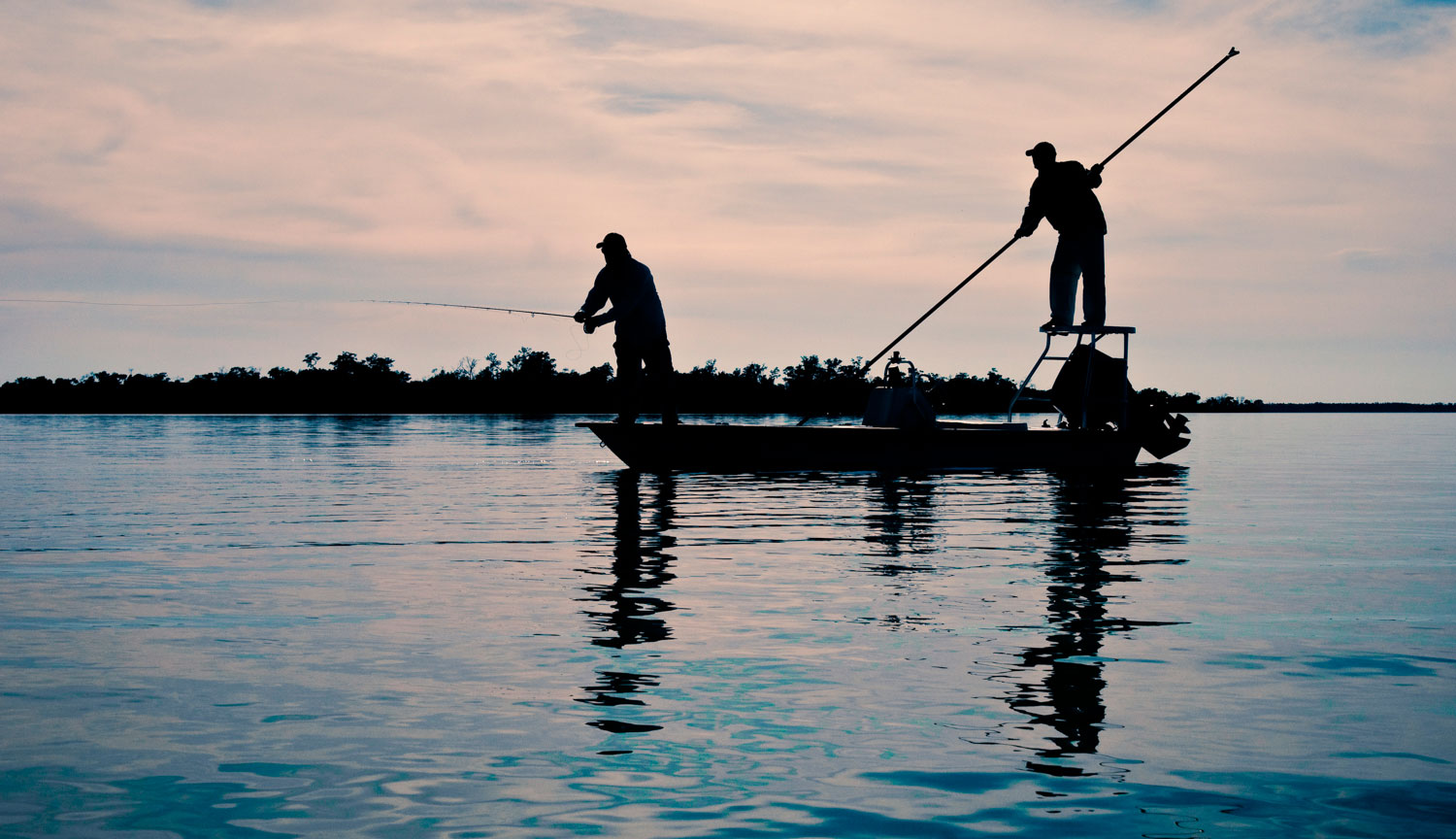
By Owen Plair
WHEN THROWING FLIES AT REDFISH, MANY PIECES OF THE PUZZLE HAVE TO COME TOGETHER TO MAKE A SUCCESSFUL DAY.
You may be able to throw a fly line 100 feet, but that doesn’t always mean you’re gonna have a killer day on the water. The most important thing when hunting redfish in the shallows is communicating with the guy on the platform. He’s not only poling you around on the skiff, but also spotting, and putting you on fish. The chemistry between the guy on the poling platform and the angler on the bow is the most important part of the day because you have to work together for the best results.
Communication is key and that’s why the bow clock was invented. If you are not familiar with the bow clock, it’s a simple idea. Picture the deck of the boat from above. Now overlay the face of a clock with noon at the very point of the bow. Nine o’clock will be ninety degrees to the left and three o’clock ninety degrees to the right. A fish located at twelve o’clock will be straight ahead of the boat and a fish at nine o’clock will be directly to the left.
If you’re new to saltwater, then you should always go over the bow clock with your guide or fishing partner before fishing. Make sure you both have the same understanding from 9 o’clock all the way to 3 o’clock and can adjust quickly while sight casting to fish.
This clock is not only good for casting direction but can also be very important for situations when spotting moving fish on the flats. I like to have my angler point his rod when I call out a clock direction. It helps us stay together and helps him see the fish. Getting the hang of the bow clock isn’t hard and will help dramatically in sight casting to fish from the skiff.
The next key factor is gauging distance. If the angler cannot see the fish, accurately judging distance is key to a good presentation. It can be hard, at first, to judge a forty foot cast compared to a sixty foot cast. When getting used to sight casting, there are visual guides that can help.
One of the best ways to judge distance is to use
Read More »Beating the Winter Blues
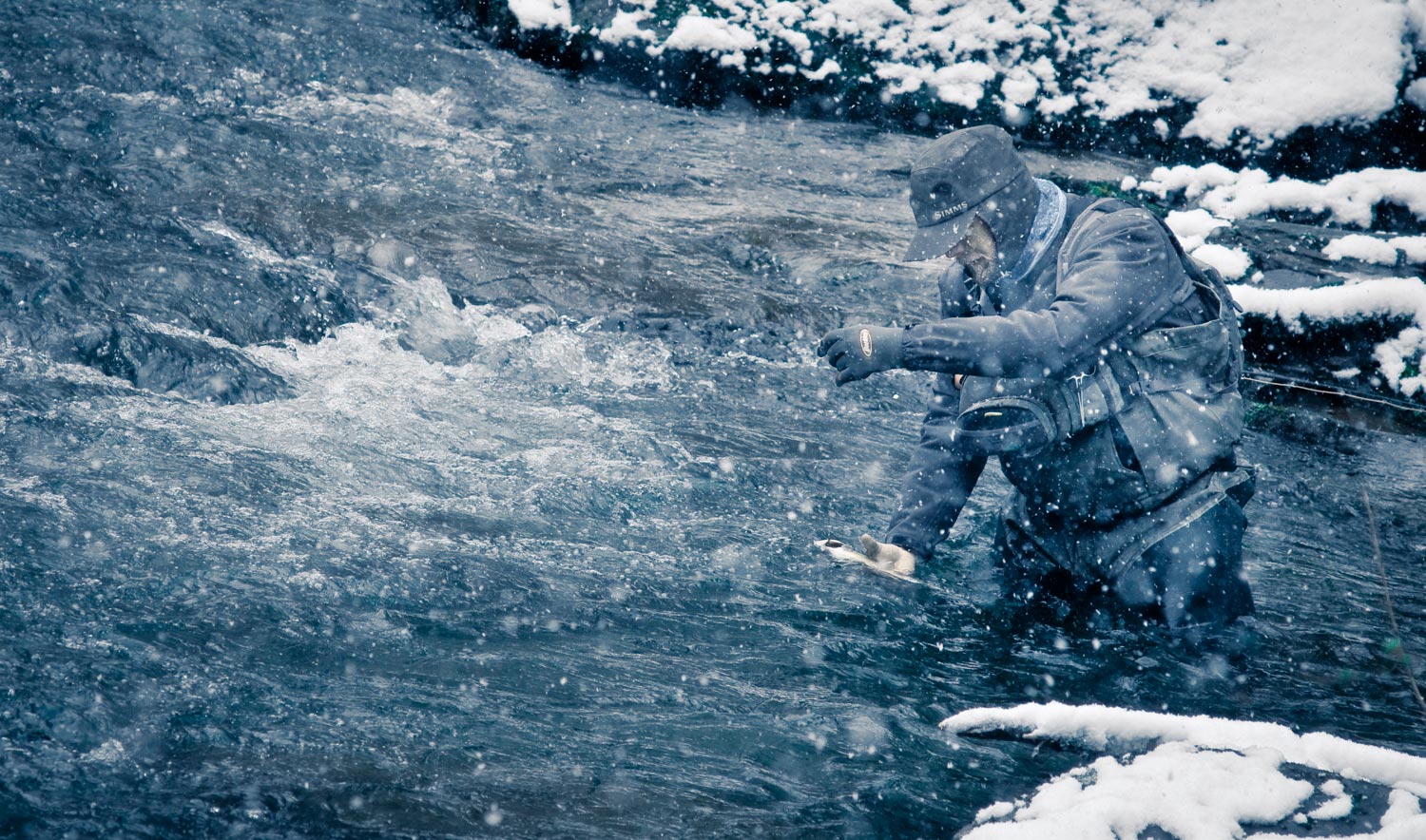
By Kevin Howell
AS I TRAVEL AROUND TO FISHING SHOWS I OFTEN HEAR PEOPLE TALKING ABOUT WANTING TO GET ON THE STREAM AND GO FISHING ONCE IT WARMS UP.
In reality, some of the best fishing of the year, here in the Southern Appalachians, takes place in the winter. Here are some ideas to help you get through the winter blues.
Fish in the winter. Winter fishing in our part of the country is fabulous. I agree, on days when it is 22 degrees and blowing blue snow, you probably do not want to go fishing. However, we have plenty of days when the air temps will hit the high 40’s to low 50’s and it makes a nice day to get out of the house. Remember a trout has to eat to survive, and you can not catch him if you are sitting on the couch.
Tie Flies. Another great way to pass the time is to tie flies. If you are new to tying or want to learn how to tie, then hang out at your local shop and take some tying classes. A lot of stores like Davidson River Outfitters even offer free or low cost classes or nights you can just come into the shop and hang out and tell fish stories.
Build a rod. Again if your local shop or fly fishing club offers a rod building class you can build your own rod and customize it in any manner you like, except for Tarheel Blue (sorry, I went to NC State).
Take a Trip. If you can afford it, take a trip. It does not have to be a $10,000 around-the-world trip. You could go to south Florida or Louisiana for a day or two and go Redfishing. You could go to south Texas and fly fish for bass. You could go to North Georgia and fish the Toccoa tailwater and camp overnight in a public campground for $2. If you want to go to Argentina or New Zealand, or the tropics like the Bahamas or Christmas Island, you can find a lot of good deals at the moment due to
Fly Fishing Tip: Mend Your Strike Indicator to Increase Your Drag-Free Drift
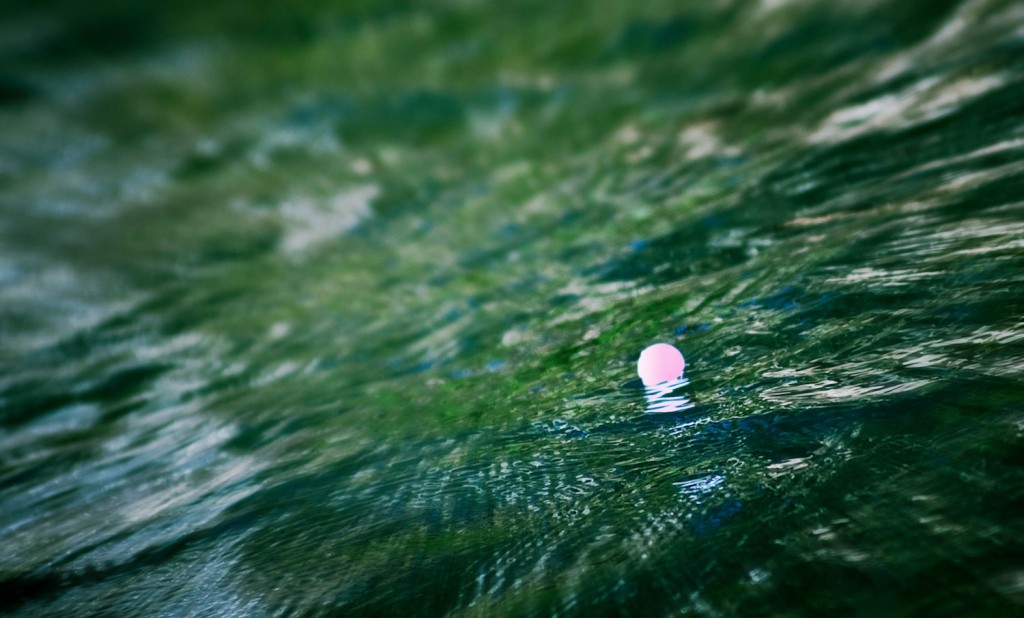
IS THERE EVER A TIME, WHEN NYMPHING, THAT IT CAN BE BENEFICIAL TO LIFT THE STRIKE INDICATOR OUT OF THE WATER DURING A MEND?
When I first started learning the art of mending fly line, I constantly struggled with keeping my striking indicator and dry fly from moving across the surface of the water. Quite often, I not only moved them during my mends, I even lifted them completely out of the water in the process. Most of the time that wasn’t a good thing, because it usually caused my flies to be pulled off my intended drift line, and that greatly hindered my ability to catch fish, no matter how accurate my initial presentation cast happened to be. I learned quickly, that poor mending, and sloppy line management, were the two main factors in keeping me from getting my rod bent with trout. There was no doubt that my problem with mending fly line laid in the fact that my technique was awful. I thought I was a whole lot maturer than I really was as a fly fisher, failing to realize that I had just begun to skim the surface of learning the intricacies of fly line mending. Such as, determining when or when not a mend was called for during a drift, mend timing and form.
Read More »Making a Living on the Flats
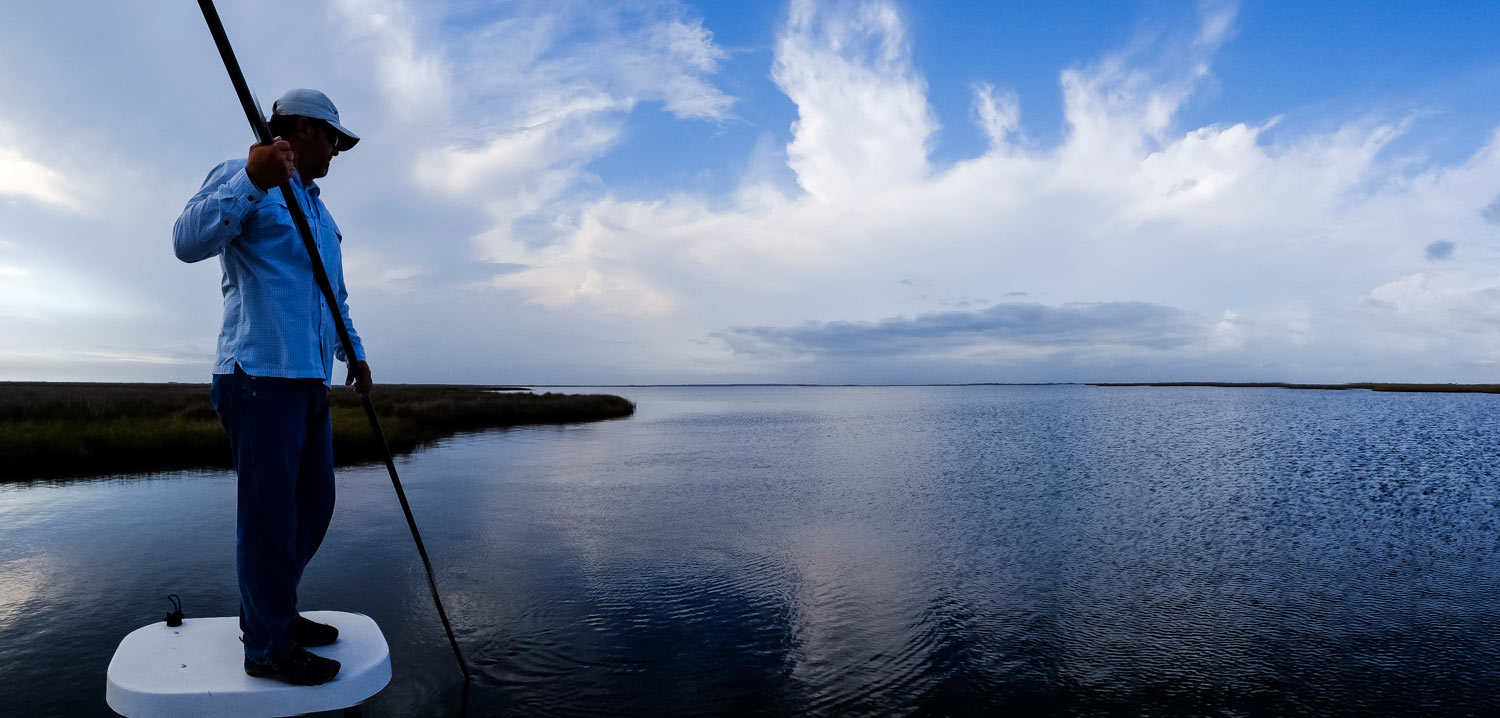
By Owen Plair
Lately it seems that everyone thinks guiding is the dream job.
Every day someone who likes to fish buys a brand new boat, pays for a website, posts fish pictures on Instagram, and calls themselves one of the top guides in the area. They usually have a full time job doing something else. From Internet videos and social media, people think guiding is all glory, easy, and something anyone can do. You have to start somewhere but you cannot create a career with a fancy boat, a website and some good photos on Instagram. You make a career with experience on the water and by sharing with anglers your passion, experience, and knowledge of your fishery. Many people soon find that guiding is not for them, which is why guides are a select few.
“You are living the dream.” I hear that all the time, or “You have the best job in the world,” or even better, “You have the easiest job!”
There are so many people who think that being a fishing guide is the easiest way to make money and the dream job. Some people even have the audacity to say its not a real job… That’s like saying being a doctor isn’t a real job. Yes, it’s an amazing feeling creating a career in something you are passionate about, but it is far from easy, and always work. Imagine poling a skiff or rowing a drift boat 8 hours a day, 200 days a year. That physical labor is the easiest part of the business. That should give you a taste of just how much is involved with being a full time guide.
If you really like fishing and own a boat you could be a guide, right?
Not even close to true.
Read More »Learning to Spey Cast
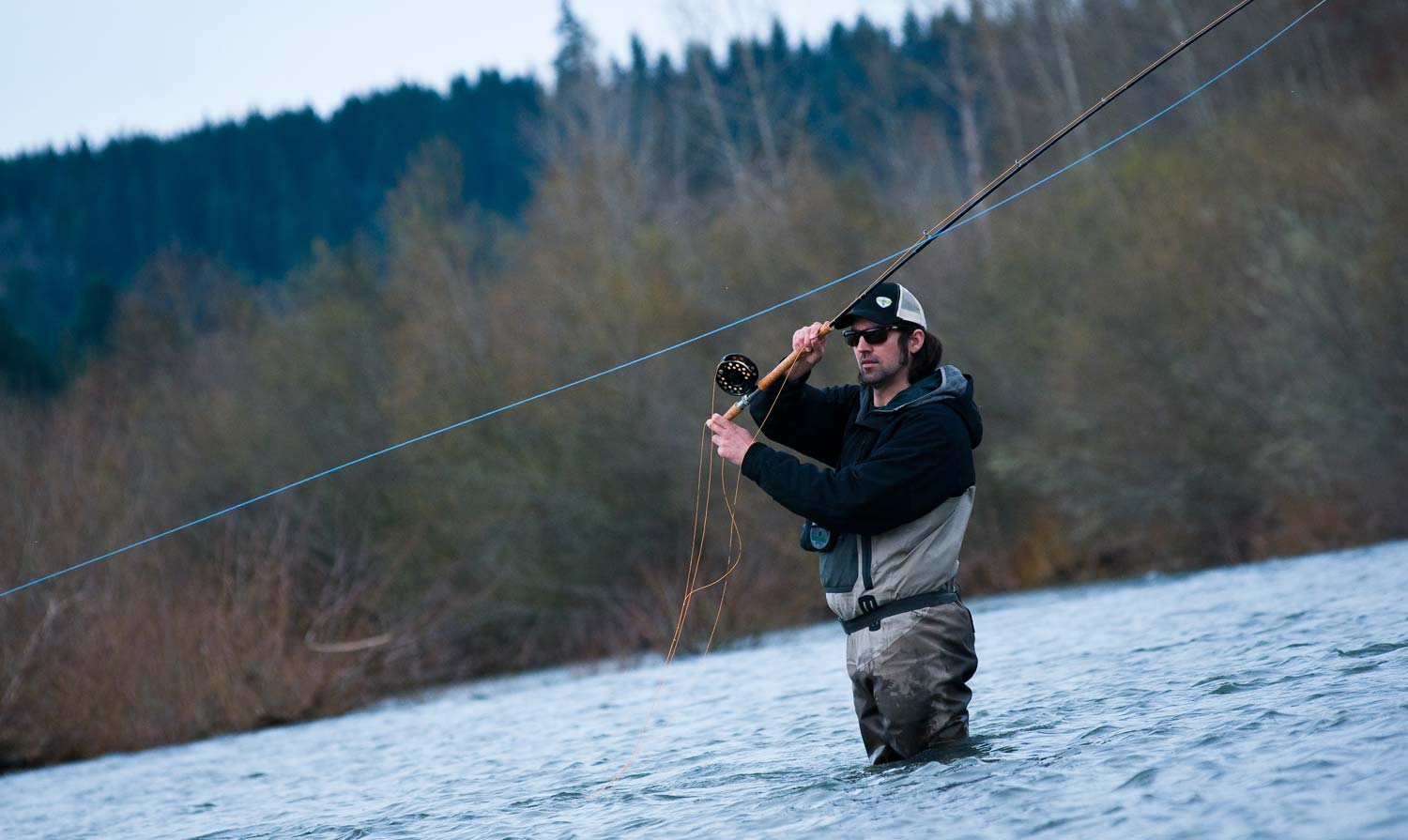
By Owen Plair
In the world of Fly Fishing there was always one style of casting that I never quite understood.
It was some sort of foreign language. An art of casting I’d only seen in videos and photos, but it always seemed so magical. Not to mention how far they could throw a fly line. Why do you use two hands? Why are the rods so long? Whats with these crazy motions on the waters surface to make this giant roll cast? Spey Casting was always a mystery to me, because I never found myself in a fishery where it was needed. Still, I was always curios about it.
That all changed very fast when I stepped off of a helicopter in the middle of the Russian Tundra, in May of 2013. I pursued a once in a lifetime opportunity guiding on the World Renowned Ponoi River, in the Kola Peninsula of Russia. The Ponoi is one of the best Atlantic Salmon Rivers in the entire world and can only be reached via helicopter from the city of Murmansk. What got my attention about the Ponoi was not just the world class fishing but the desire to experience a completely new style of fly fishing. The best way of targeting these Atlantic Salmon on fly is, of course, swinging flies with a two handed rod or Spey Rod. Spey Casting has been very popular in Europe for hundreds of years and has slowly made its way over to the united states, with steel head and salmon anglers using switch rods and spey rods. The rods, lines, leaders, flies, and even reels were all so different than what I was used to. I was stepping into an entirely new world. Thats why I decided to go to Russia.
Before I left for Russia a friend let me borrow his spey rod to get a feel for spey casting and man was I blown away when I put together his 15’ 9wt. The thing felt like a flag pole in my hand! Waving it around on my pond, false casting, roll casting, and having no Idea what to do with a spey rod made me realize I had a lot to learn. I watched youtube videos, read articles, and even talked to some of my clients about spey casting. It was so much harder than I thought it would be and way more technical. One thing I did learn through fly casting, instructing clients, and teaching the National Orvis Fly Fishing School was that fly casting has so much to do with muscle memory and that if you don’t learn correctly from the beginning you are setting yourself up for failure in the end. So after attempting to teach myself I decided to wait until I got to Russia to really perfect the different spey casting techniques and man was that the right move.
The first thing I learned was that moving water is key and truly helped set up your line for the cast. My first instruction came from Matt Brewer who was the camp manager at the time and a long time guide. Matt could throw a spey rod beautifully. He made it look effortless shooting 70 to 80ft casts. The sound of the fly line ripping through the water as Matt threw the first cast was something I will never forget. Matt taught me the double spey and man was it a humbling feeling, learning how to fly cast from scratch again. That awkward feeling when your muscles and mind are asked to do something they have never done and you feel almost hopeless. Matt was very patient with me and in between the laughs, and sarcasm, I started from the beginning with how to hold the rod, how much line to start with, and most importantly understanding the D loop. Crossing my arms, folding over the line, and swinging back. It all felt odd compared to what I was used to but it also felt pretty awesome learning something completely new in fly fishing. Matt was a true professional and had me casting in no time which led to my first Atlantic Salmon on fly soon after.
The D loop is the most important part of the spey cast, because that is how
Read More »Rosa Parks Fished Streamers
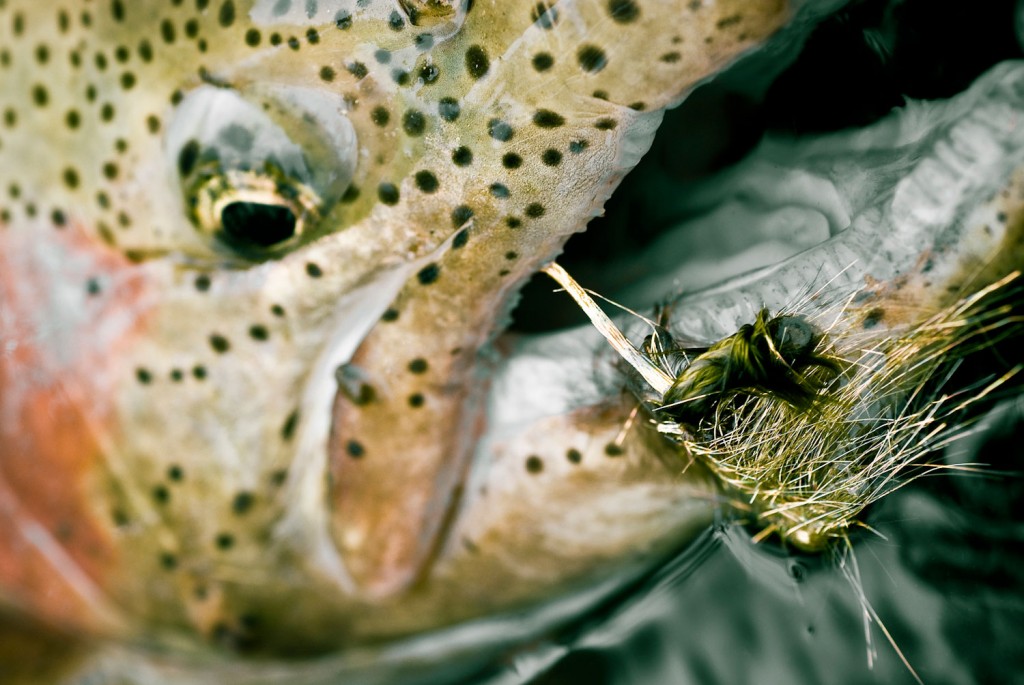
Stand up with me here streamer guys, you know what I’m talking about!
First of all I am in no way making light of Ms. Parks courageous acts or life of service. She is on my list of personal heroes and that list is pretty damn short. If you don’t know who she is, you should! That said, like Rosa, I’m getting pretty fucking tired of the back of the bus.
Stand up with me here streamer guys, you know what I’m talking about. Every time I get in a drift boat with a streamer rod I get stuck in the back of the boat. (I’m not picking on you here BW, everybody does it.) There’s always one of your buddies who pipes up with, “I sure would like the chance to catch one on a dry before you scare the hell out of ’em with that thing.”
I have a couple of problems with this horse shit. The first being, streamers do not spook fish. If they do, explain to me why fish eat them. Not just big fish, I routinely catch fish barely bigger than my streamer.
The primary reason that streamers do not spook fish is that fish are not afraid of things that are under water. Ask anyone who has snorkeled. If fish don’t spook at the sight of a person under water a fly isn’t going to phase them. I know one guide on the Snake River who, in the fall, prefers to have a streamer fisherman in the bow and a guy throwing hoppers in the back. His theory is that the streamer gets the fish worked up and ready to eat. It works, too.
I’ll say it again, streamers do not spook fish!
Secondly, it’s just a matter of etiquette. I put my time in on the oars like everybody else. When you get off the sticks, you go to the bow. That’s how it works, that’s your reward.
What the dry fly guy in the bow doesn’t get is that I’m making about ten times as many casts as he is. I’m working with a huge amount of line at my feet, getting hung up in the plugs or around the seat, getting grit all over it from the floor that cuts my fingers when I strip. That deck in the front of the boat was made for streamer fisherman. It’s for holding line, not your beer. Don’t even get me started on trying to get the oarsman to position the boat for a streamer guy. That’s never going to happen.
All that aside, here’s what really chaps my ass. Here’s what’s really going on. It’s not about me spooking fish or etiquette. Just like Rosa, I’m being treated like a second class citizen. I’m fishing from the back of the boat because the dry fly guys think they are better than me. They think that God handed down the #20 Elk Hair Caddis to them and my four inch streamer and I are a perversion and should only be allowed in Massachusetts. They think I’m doing it wrong.
If you’ve been reading my ravings for long, you already know that this kind of snobbery makes me crazy. I don’t know what it is about a fly rod that makes some people feel like they have to tell everyone else how to fish but it happens with amazing regularity. I get it, you’ve put a lot of time in learning how to fish and you feel like you have it figured out but here’s the thing, there’s more than one way to fish and none of them is the “right way.”
I love streamers and I make no apologies for it. The visual aspect of streamer fishing can’t be beat. To me, there is nothing better than watching a big trout rocket out of the shadows to chase down my streamer. I love to watch them come up from behind, then veer off and come back to broadside my fly. I like seeing their
Read More »A Guideline To Accuracy in Fly Tying
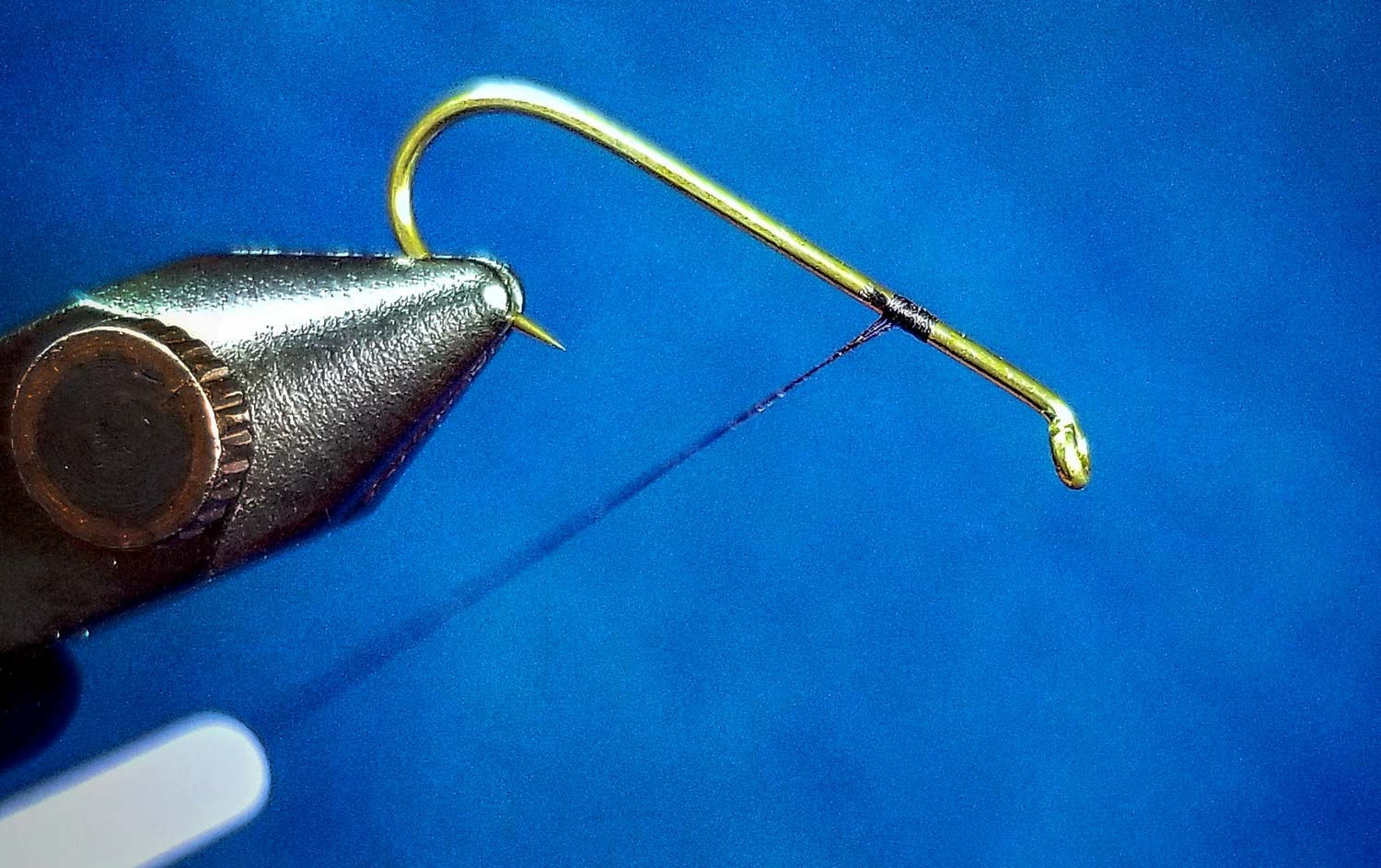
By Bob Reece
Good fly tying is all about accuracy.
One aspect of fly tying that often creates frustration is tying in materials in the desired location. As hook size decreases, this task can becomes even more difficult. While time spent tying helps to conquer this issue, there is a technique that expedites the process.
From a young age, I’ve had larger than average hands. While this is great in many aspects of life, it’s not always beneficial in fly tying. As a young tier I often struggled to secure many materials to the hook in the location where I knew they should be. My hands either blocked my field of vision or were simply too large to work with the smaller sizes of the hook range.
One day I wandered into a fly shop on a cold snowy spring day. There was a man at a tall table tying streamers. As I watched him tie, he did something that I had never seen before. He folded several of the materials over or under the thread, to some degree. Then he simply slid the materials down the thread, using it as a guideline to the exact location of the tie in point.
While I’m sure that this man did not invent this technique and that it’s undoubtedly been used by tiers the world over, it had a huge impact on my development as a tier. By using the thread as a guideline to the hook shank, the tier eliminates the possibility of lateral movement by the materials. This system ensures that the material lands exactly at the base of thread strand. The location of the bobbin in the three hundred and sixty degrees of one wrap determines which side, top or bottom of the shank the material ends up on.
Read More »